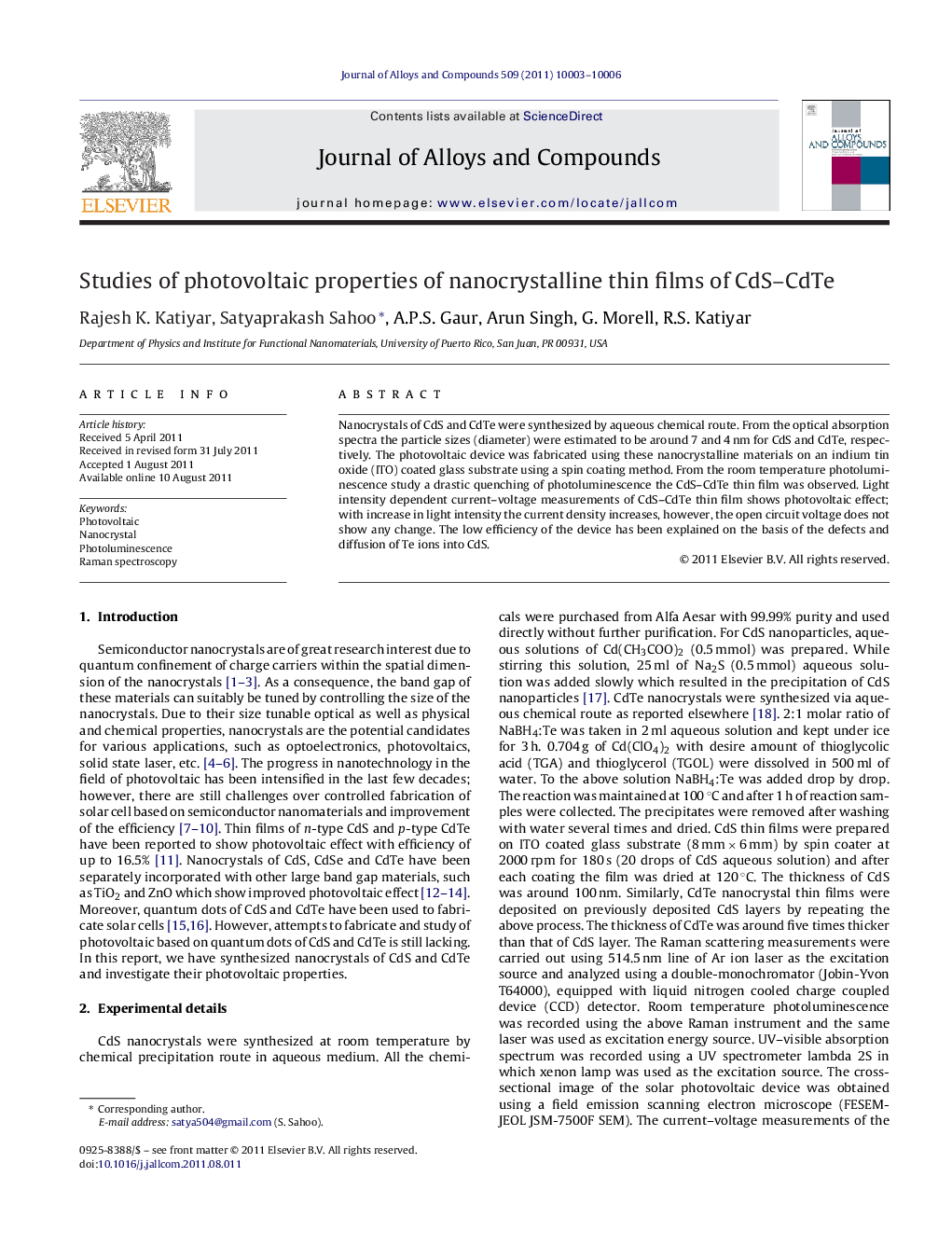| Article ID | Journal | Published Year | Pages | File Type |
|---|---|---|---|---|
| 1616890 | Journal of Alloys and Compounds | 2011 | 4 Pages |
Nanocrystals of CdS and CdTe were synthesized by aqueous chemical route. From the optical absorption spectra the particle sizes (diameter) were estimated to be around 7 and 4 nm for CdS and CdTe, respectively. The photovoltaic device was fabricated using these nanocrystalline materials on an indium tin oxide (ITO) coated glass substrate using a spin coating method. From the room temperature photoluminescence study a drastic quenching of photoluminescence the CdS–CdTe thin film was observed. Light intensity dependent current–voltage measurements of CdS–CdTe thin film shows photovoltaic effect; with increase in light intensity the current density increases, however, the open circuit voltage does not show any change. The low efficiency of the device has been explained on the basis of the defects and diffusion of Te ions into CdS.
Graphical abstractQuenching of room temperature photoluminescence of CdS–CdTe thin film as compared to CdTe nanocrystals.Figure optionsDownload full-size imageDownload as PowerPoint slideHighlights► Nanocrystals of CdS and CdTe of 7 and 4 nm, respectively were synthesized by aqueous chemical route. ► The photoluminescence of the CdS and CdTe thin films was quenched drastically compared to individual nanocrystals. ► A low photovoltaic efficiency was observed due to Te ions diffusion into CdS.
